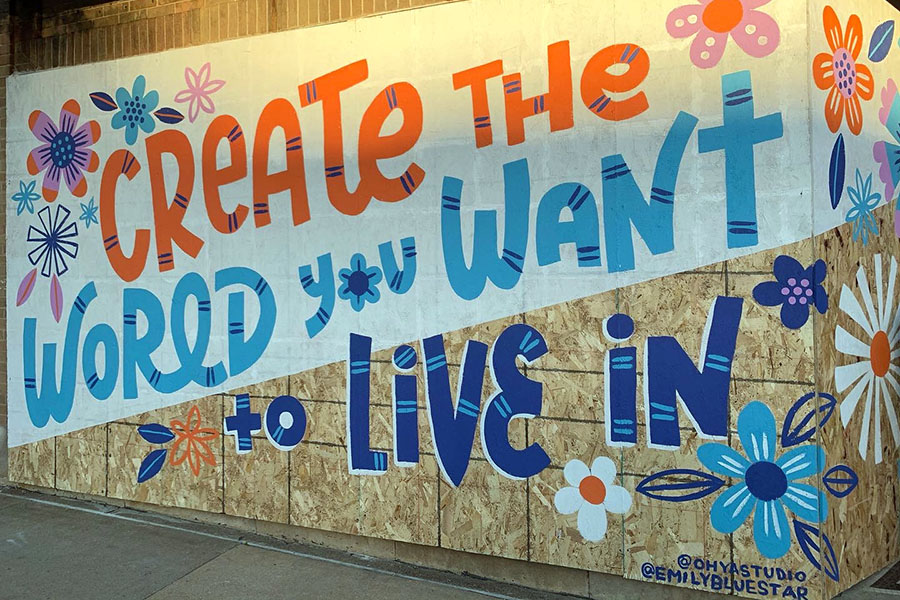Why world’s issues are our issues
Expose yourself to the problems of today and the hardships of tomorrow
Artwork by Emily Balsley, an illustrator and muralist found on State Street.
November 23, 2021
As I go about my days as an average American citizen, I wake up in my heated home. I flick on a switch that creates visibility. I pull a nozzle, and a shower of warm water appears for me to bathe in. I put on some fresh clothing. Fry up some eggs for breakfast. Then I take the pot of coffee that freshly brewed itself, pour a cup of joe in a mug and walk into my home office to start my day at work.
I see my life as quite simple. I work hard for what I want. I keep up with my bills. I have loving family and friends. Education is available for me, expensive, yet there. I live in a very progressive community that I feel safe in. I have goals and dreams that seem reachable, knowing I have the resources. I have faith. I see opportunity. I see growth.
I have everything I need and more at my fingertips. So, why is it that hundreds of millions of people around the world do not even come close to obtaining essential needs for survival? If it is true, what I believe in, that our whole existence is one, unified by human and nature, then why are our brothers, sisters and creatures of this planet being let down?
When it comes to things that are negatively affecting the lifestyle of a country, a culture, a community or a planet, it’s time for the greater whole to come together and realign. Because when it comes down to it, their problem is our problem.
For us to improve as a whole, we must first expose ourselves to the issues at hand across the world. Below are some facts that will explain some heavy world issues that our people, our land, and our planet are experiencing every single day.
Environment
As our planet continues to heat up due to the increase of carbon dioxide in the atmosphere, mainly produced by fossil fuels in which humans use daily, environmental issues will always be present. Forest fires on the United States western border will remain burning at an increased rate. As each glacier melts, our ocean waters will keep rising and warming up. With all this impact, biodiversity comes into effect. This leaves entire species and ecosystems left for extinction. When will humans be next?
Lifestyle
According to the World Bank Group, 736 million people on this planet live in extreme poverty. There are people living in communities with no running water, no food to eat, no sanitary place for human waste, or structured shelter for security. People lack resources from health, education, transportation, and employment. There are about 7.8 billion people roaming this earth, per the Population Reference Bureau. You would think out of those billions of people there would be more focus on assisting those in dire poverty.
Food & Water Scarcity
There are parts of this world, such as in Kenya, where women are spending an average of 80 minutes per day collecting water for survival. That doesn’t guarantee that the water is clean or without any water borne illness. This is not only a risk for health reasons, but without an accessible water supply, people are not able to farm. Without farming, a reliable food source is hard to grasp.
Then, there are other parts of the world where water is being treated as a guaranteed breath of fresh air. Agriculture is one of the leading causes for water shortages, taking up almost “70 percent of all water withdrawals,” according to the Food and Agricultural Organization of the United Nations. Due to irresponsible wasting methods and the high demand for agriculture, water is becoming more and more scarce.
The key to world’s issues is to not solve them all at once. You do not climb a mountain with a single step. It takes several small steps. The first step, educating yourself, is the most important one. And you took that step today.































